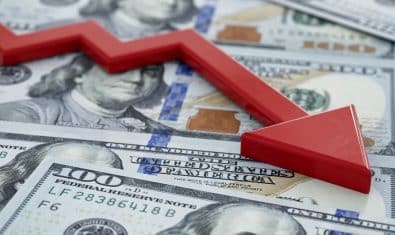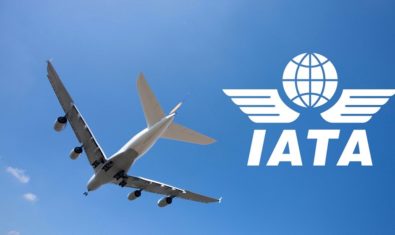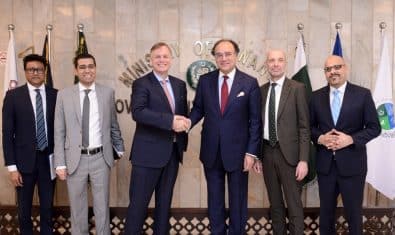The issue of foreign debts is part and parcel of every discussion on Pakistan’s economy. The issue has only grown in intensity in recent decades, and the staggering burden of loans has become an existential threat to the country’s economy.
Foreign loans do not come easy. The stringent conditions of the lending institutions and countries can potentially compromise a country’s economic and foreign policy, and at times even its sovereignty.
News headlines regarding Pakistan’s striking deals with the likes of the International Monetary Fund (IMF), friendly countries, and various other banks make it to newspapers and television screens every day. The average citizen, struggling to make ends meet, wonders where these loans worth millions of dollars eventually go as they do little for their struggles.
Let’s simplify the phenomenon of loans and debts and understand why a country has to look towards lending institutions to stay afloat.
There are two types of debt, external debt, and internal debt. To put it simply, external debt is the portion of a country’s debt that is borrowed from foreign lenders.
International Monetary Fund (IMF)
The International Monetary Fund (IMF) is an international financial institution of 190 countries, which aims to aid countries to achieve macroeconomic stability and alleviate poverty. However, the average citizen perceives it as a villain. The reason is the stringent conditions on which it offers loans resulting in higher taxes, an increase in tariffs, and financial misery for the struggling masses.
IMF’s primary mission is to provide loans to member countries facing actual or potential balance of payments problems.
Our imports bill (expense) is much higher than the export receipts (income). Hence, there is a deterioration in the overall balance of payments. In such a situation, Pakistan or any other country would need to maintain foreign exchange reserves to a certain level, which is where IMF comes in.
The loan provided by IMF is used to shore up foreign exchange reserves. IMF, on the other hand, also initiates a reform program for the economy and a recovery program for its loan. The reforms result in reduced subsidies, jacking up of electricity tariffs, and new taxes.
World Bank & Asian Development Bank
World Bank, Asian Development Bank (ADB), Islamic Development Bank (IsDB), and other such institutions provide financing to Pakistan aimed at socio-economic development, reducing poverty, and improving living standards.
These institutions provide financing against initiatives and projects at a certain interest rate. For instance, World Bank will provide financing of $400 million to the Federal Board of Revenue (FBR) for the development of the tax automation process. Similarly, ADB recently approved a loan of $235 million for upgrading the National Highway. IsDB provided an amount of $60 million to Pakistan for the polio eradication programme.
These institutions review the feasibilities of the projects and initiatives and ensure that the projects are completed.
Friendly Countries
Friendly countries also provide financial aid to Pakistan to avert a balance of payments crisis. These countries include Saudi Arabia, United Arab Emirates, China, and Qatar.
Countries, particularly Saudi Arabia, also help through different ways such as relaxation in repayment of oil import bills for a certain period, known as deferred payment. In this way, the country buys some time to make settlement of its external payments with other demanding borrowers.
These countries also have extended grants and aids to Pakistan in the past. However, a political agenda behind such concessions cannot be ruled out.
Consortium or Club
The Paris Club is an informal group of official creditors whose role is to find coordinated and sustainable solutions to the payment difficulties experienced by debtor countries. Pakistan owes $11.5 billion to the Paris Club, according to the IMF. Earlier this year, Pakistan was given another extension by the Paris Club of creditor countries to service its debt so that it can dedicate its resources to combating the coronavirus pandemic.
Grants and Aids
Various countries, usually through their specialized welfare agencies, also provide grants and aids to Pakistan, which includes USAID, UKaid, and JICA among others. These agencies also provide financing for various development and welfare projects mainly related to education, skilled training, and health.
In 2021, the European Union (EU) allocated €7 million in humanitarian support to Pakistan to alleviate the socio-economic impact of the coronavirus outbreak.
Others
Pakistan received financial assistance mainly from the United States in the last two decades on the account of Coalition Support Fund (CSF), after it joined the US-led coalition in Afghanistan as a front-line ally. The country has received $14 billion from the US on account of CSF, with over $9 billion in claims still pending.
What Went Wrong?
The country continues to borrow from various institutions and countries and its debt is surging. So, with all the money flowing in, what went wrong and why do we still need more loans?
A big chunk of loans that we borrowed in the last two decades has not been productive. Imports of luxury items have gone unchecked for long periods and there was barely any check on the flight of capital.
Flawed policies are detrimental to foreign exchange reserves. For instance, the USD-indexed profits doled out to independent power producers (IPPs) was a hugely damaging policy decision. As always corrupt practices and vested interests cannot be ruled out when it comes to such policies.
Alternate Roadmap
Economic experts suggest various remedies to fix the country’s economy but it takes many years to come out from the vicious cycle of debts.
- A transition should be made from being a trading country to a manufacturing country
- The informal economy should be made formal through digitization and technology
- Efforts should be made to increase foreign exchange receipts through exports and remittances.
- Import bill should be controlled by investing in import substitution manufacturing
- Drastic steps are needed to raise the tax-to-GDP ratio to 15 percent in the coming years
- Attractive and consistent policies should be devised for investors in various sectors
- The business model run by mafias and middle-men should be curtailed
- There should be zero tolerance for corrupt policies and exemplary punishments
In the next part of this series we will try to understand issues related to Pakistan’s loans.





















